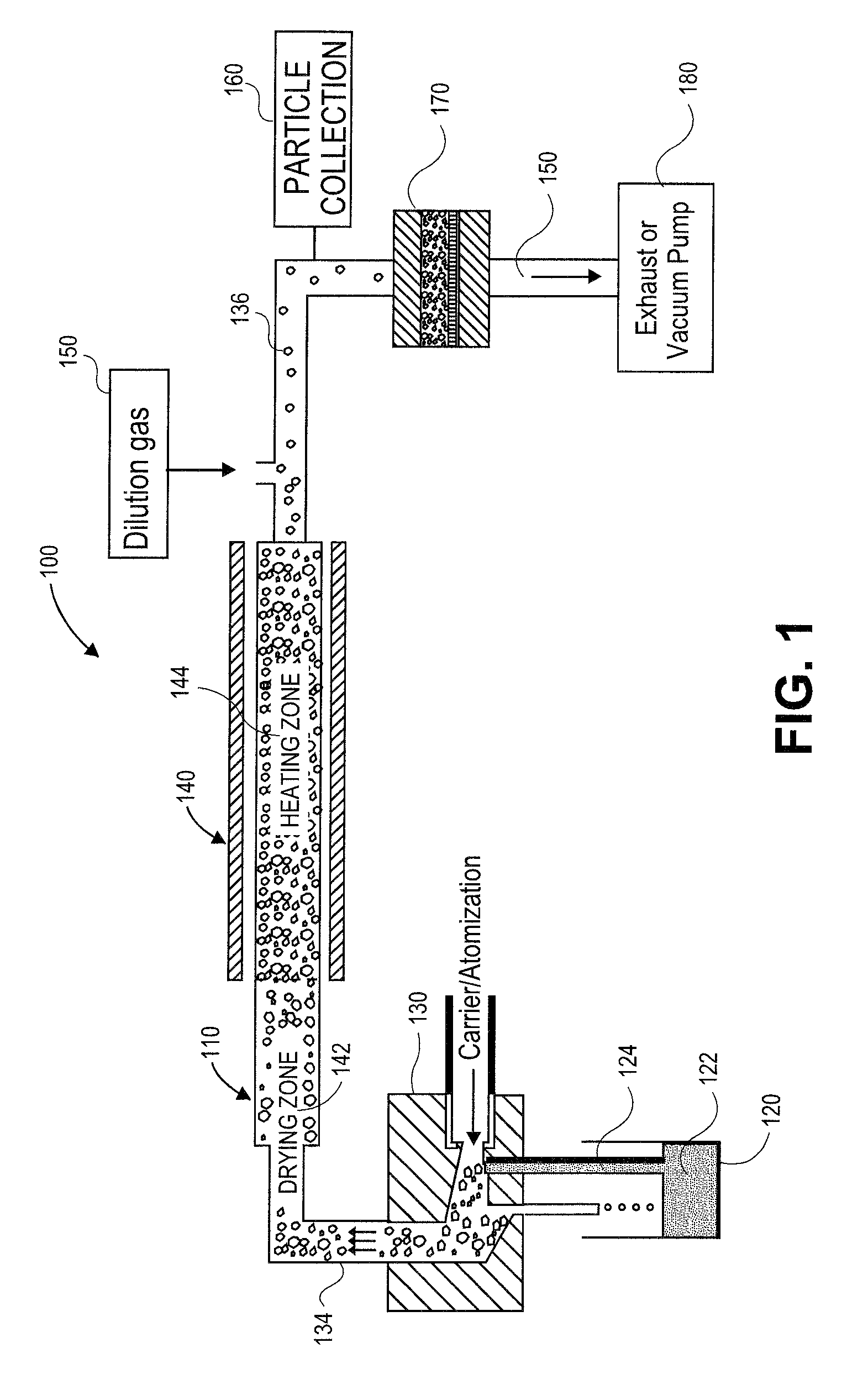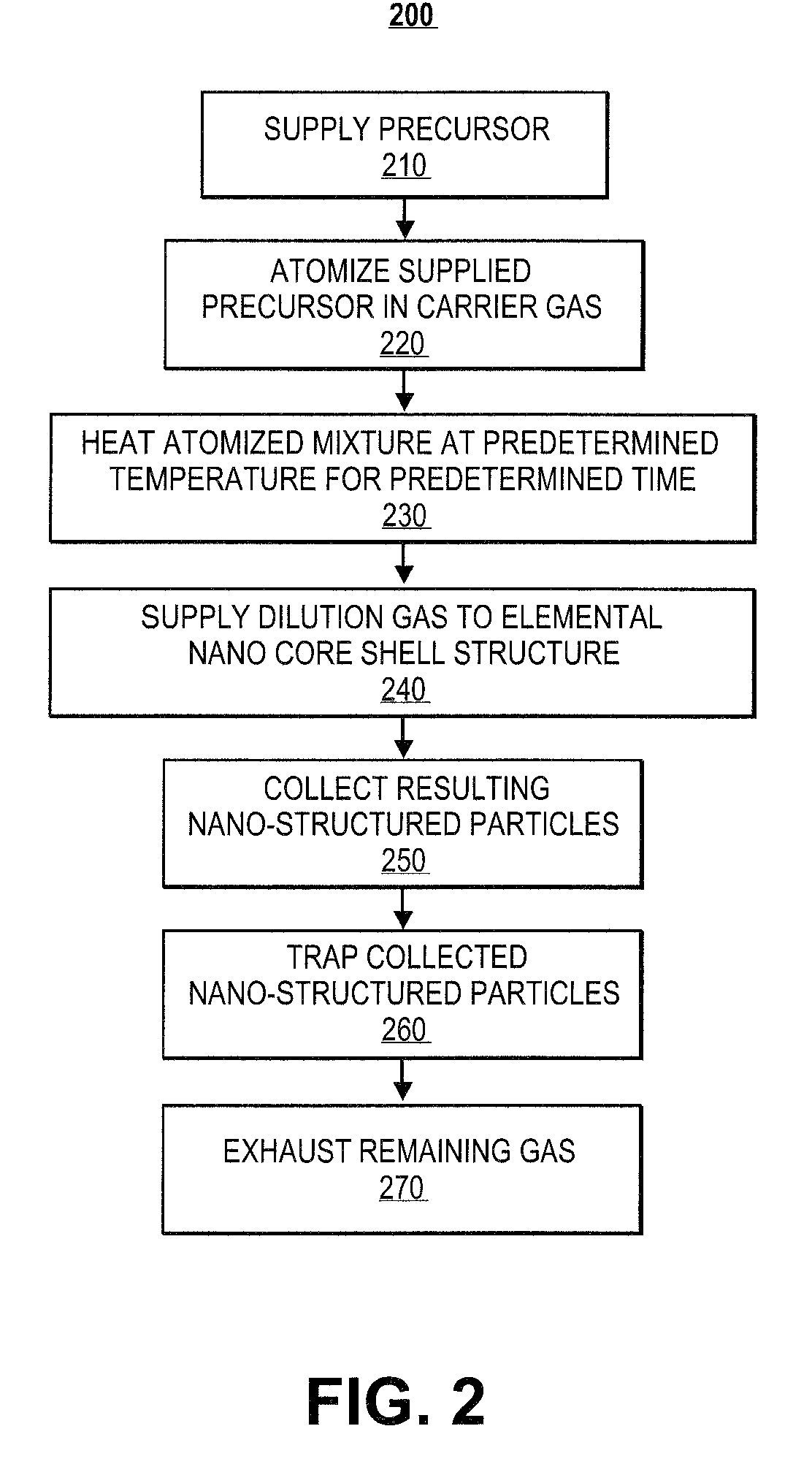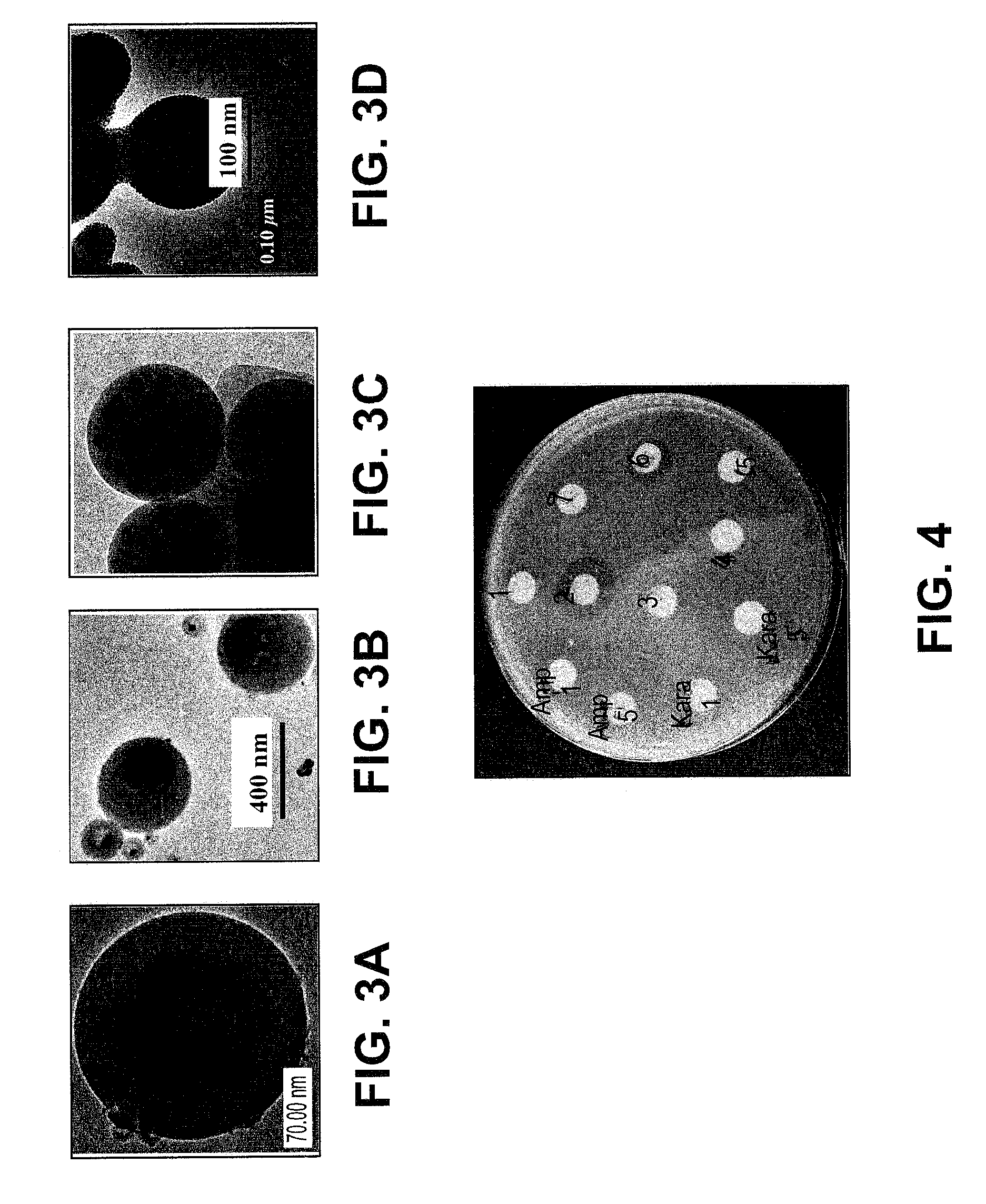Aerosol method for nano silver-silica composite anti-microbial agent
a composite anti-microbial agent and nano-silica technology, applied in the field of aerosols, can solve the problems of inconvenient maintenance of disinfectants, inconvenient use of disinfectants, and inability to maintain the effect of disinfectants,
- Summary
- Abstract
- Description
- Claims
- Application Information
AI Technical Summary
Problems solved by technology
Method used
Image
Examples
example 1
[0042]A homogeneous solution of 5 g aminopropyltriethoxysilane (AMPTES), 0.5-2 g AgNO3, 25 g DI water, and 12 g ethanol were sprayed / atomized into a glass aerosol reactor. The reactor was maintained at a temperature of about 400° C. within a Lindberg furnace. Spraying was with a TSI 9302A atomizer using nitrogen as a carrier gas. Pressure drop at a pinhole of the atomizer was set as 20 psi. The residence time was about 5 seconds. The powder was collected on PTFE filter paper.
[0043]The solvent, evaporation rate, aminosilane / Ag ratio in the precursor, heating temperature droplet density, and residence time all influence the final particle size, morphology, silver crystallite / cluster size, and silver distribution. X-ray diffraction (XRD), transmission electron microscopy (TEM), and energy dispersive spectroscopy (EDS) analysis can show that the silver nitrate can be easily reduced into elemental silver at the high temperature. In the final product, there are no evident XRD peaks for Ag...
PUM
| Property | Measurement | Unit |
|---|---|---|
| time | aaaaa | aaaaa |
| temperature | aaaaa | aaaaa |
| temperature | aaaaa | aaaaa |
Abstract
Description
Claims
Application Information
 Login to View More
Login to View More - R&D
- Intellectual Property
- Life Sciences
- Materials
- Tech Scout
- Unparalleled Data Quality
- Higher Quality Content
- 60% Fewer Hallucinations
Browse by: Latest US Patents, China's latest patents, Technical Efficacy Thesaurus, Application Domain, Technology Topic, Popular Technical Reports.
© 2025 PatSnap. All rights reserved.Legal|Privacy policy|Modern Slavery Act Transparency Statement|Sitemap|About US| Contact US: help@patsnap.com



